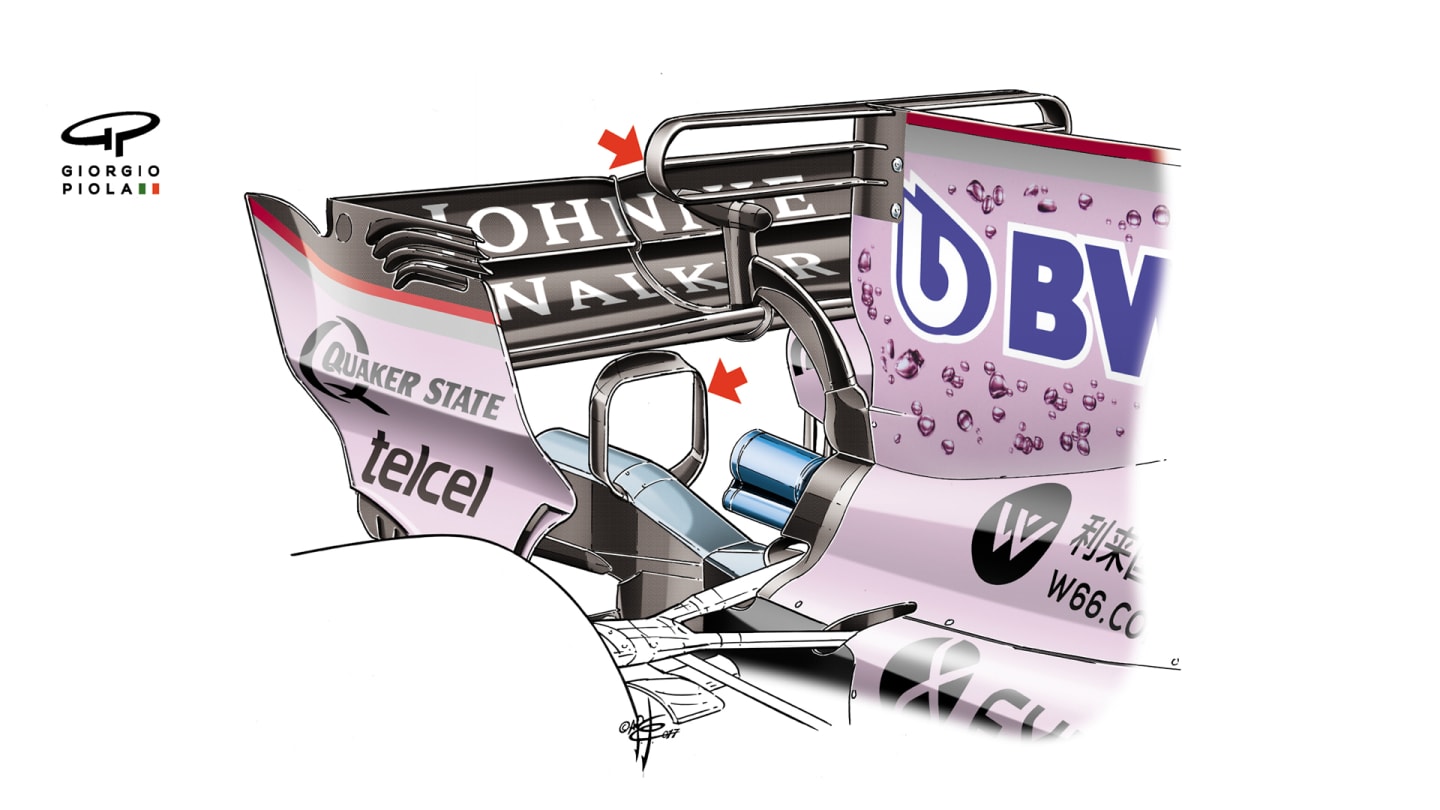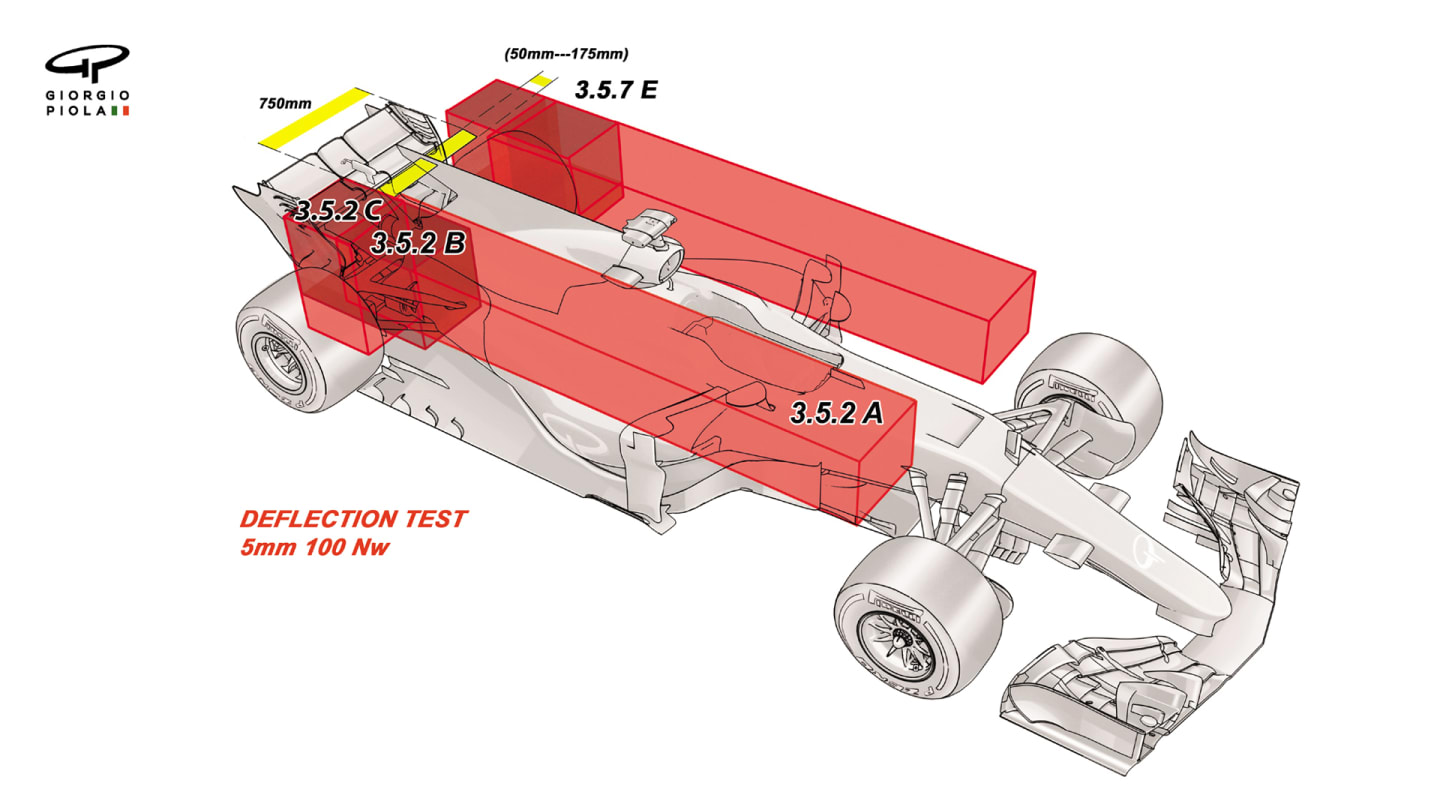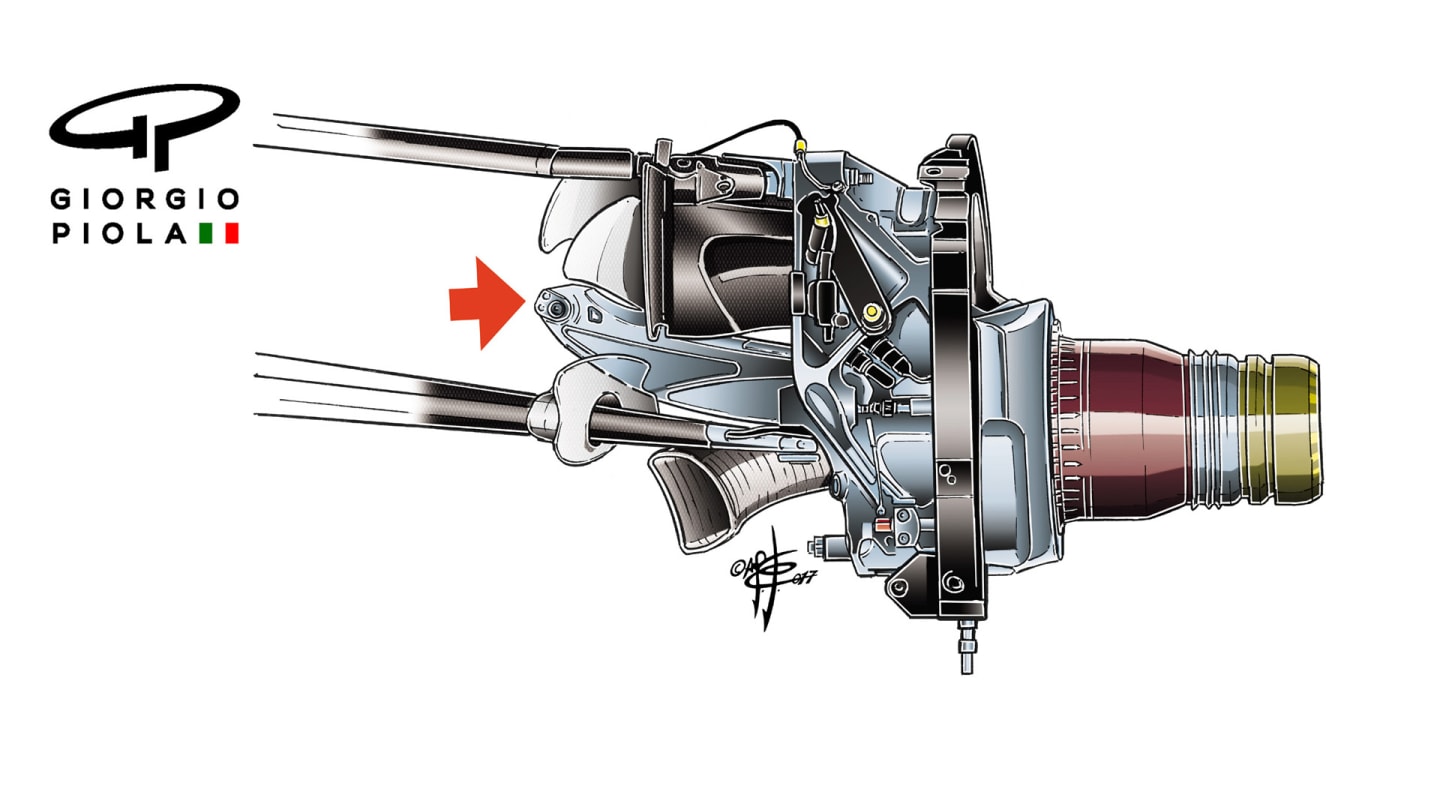
LIVE
Practice 3
- 1 - -
- 2 - -
- 3 - -
Technical
What are the new F1 technical rules for 2018?
Share

After the technical rules revolution of 2017 – one that saw F1 cars become wider and faster – this season’s changes are relatively few in number. That doesn’t mean, of course, that they aren’t important – and some will be very obvious indeed…
Goodbye to T-wings and shark fins
When the teams considered the 2017 regulation changes, as always they were looking for what wasn’t written in the rules – ie the loopholes – as well as what was. The emergence of the extended, shark-finned engine covers, combined with the rather ungainly looking T-wings, was the result of one such loophole – but one that has been closed for 2018.

The blocks in red above show where developments were forbidden - but as you can see the small, central space in between had no restrictions and the teams took full advantage, leading to some extreme solutions. Williams employed a double T-wing, while the likes of Force India (top drawing), Renault and McLaren took things further, experimenting with multiple planes. The purpose of the T-wing was to better direct airflow to the main rear wing, and in some cases to create a little additional downforce.
With the shark fins and T-wings outlawed for 2018, we can expect the rear of this season’s new cars to look more like that tested by Sauber in Austin back in October of last year, illustrated below. The engine cover still features a fin of sorts, but nothing like the huge swathes of carbon fibre we saw in 2017.

Hello to halos
The one change every F1 fan will immediately notice in 2018 is the introduction of the halo – the cockpit protection device designed to further improve driver safety in the event of an accident, and in particular to deflect debris away from the head.

The design of the halo, which we have seen teams trialling in practice and test sessions over the past two seasons, is not dissimilar to the original study carried out by Mercedes at the FIA’s request in 2015, with a central pillar supporting a 'loop' around the driver's head.
Though the halo is mandatory, with its core design dictated by the rules, there will be some scope for teams to modify its surface, so don’t be surprised to see a variety of small aero devices adorning this new addition.
The figures in the drawing above indicate the impact forces, in kilonewtons, that the halo must withstand in each direction to pass the required FIA static load tests. This is an area which has occupied a lot of the teams' time, not least because they would ideally like to keep the mountings as low-weight as possible.
The overall minimum weight of cars has gone up by 6kg to 734kg to compensate for the introduction of the halo, but it's estimated that the actual impact of the device plus the mountings could be as much as 14kg, which will leave teams with less room to play with when it comes to performance ballast - and also put heavier drivers at a potential disadvantage...
Trick suspension outlawed
Another small, but potentially important directive issued by the FIA ahead of the 2018 season relates to trick suspension systems which could be used to improve a car’s aerodynamic performance.

Last year teams including Red Bull (above) and Ferrari (below) tried set-ups with a small link in the front suspension connected to the upright, believed to cleverly allow the ride height of the car - a key factor in aero performance - to be varied over the course of a lap depending on steering angle. The FIA has since decreed such systems will not be allowed.

YOU MIGHT ALSO LIKE
Podcast F1 EXPLAINS: How to drive an F1 car and why Suzuka is such a challenge – with Pedro de la Rosa
News Tsunoda reflects on his first outing as a Red Bull driver and assesses feel of the RB21
News Piastri and Norris expecting challenge from Mercedes as McLaren end ‘difficult’ first day in Japan on top
Live Blog AS IT HAPPENED: Follow the action from second practice for the Japanese GP




